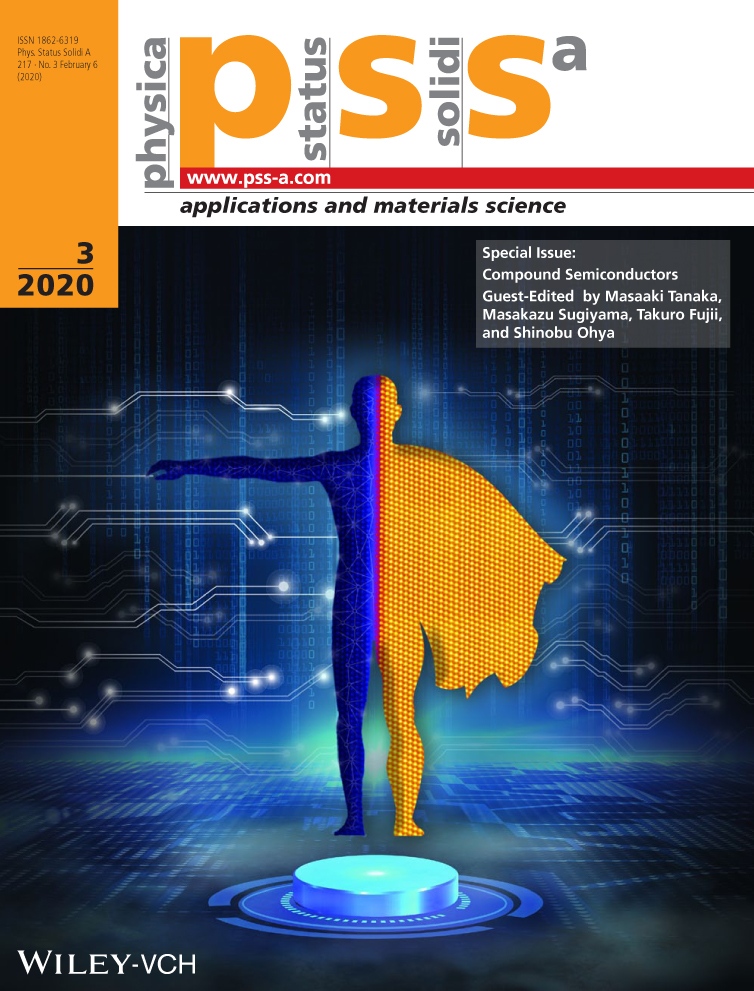Growth of InGaAs Solar Cells on InP(001) Miscut Substrates Using Solid-Source Molecular Beam Epitaxy
Abstract
Herein, the effects of both the growth temperature and the substrate miscut on the properties of lattice-matched InGaAs solar cells grown on InP substrates via solid-source molecular beam epitaxy are investigated. The growth temperature is varied from 420 to 490 °C. InP(001) miscut by 2° toward (111)A and (111)B denoted by 2°A and 2°B, respectively, and exactly-cut substrates are used. Material quality is evaluated by photoluminescence (PL) and atomic force microscopy (AFM) measurements. At room temperature, the PL emissions become more intense at higher growth temperatures and with miscut substrates, indicating less nonradiative recombination. AFM results show a streaky surface with step structures along the direction for cell grown at 490 °C on 2°A, suggesting that the substrate promotes step-flow growth. Consequently, the highest conversion efficiency (12.3%) for the cell grown at 490 °C on 2°A is obtained. Especially, the open-circuit voltage (VOC) increases from the baseline of 0.350 V (for the cell grown at 420 °C on an exact substrate) to 0.374 V. The Eg−VOC deficit, where , of 369 mV is obtained, which is a standard benchmark for high-material-quality solar cells.
Conflict of Interest
The authors declare no conflict of interest.




